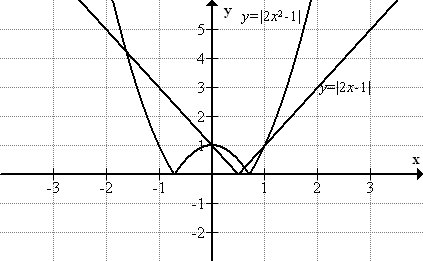This week we started our new unit on absolute value and reciprocal functions. We extended our understanding of absolute value functions, and how they would look on a graph as a linear function and a quadratic function.
An absolute value is a distance between a number to zero, therefore the absolute value of a negative number will always be positive.
linear function: y=mx+b
quadratic function:
When the absolute value symbols are added to the functions, it makes the negative points of y become positive, which changes the parabola.
The x-intercept of a graph is a critical point, also known as the point of inflection. It is where the graph of the function changes direction dramatically.
Piecewise notation: the original part of the graph without the absolute value symbols that stay the same after the symbols are put in are first written, and then the part that changes and reflected through the absolute value symbols are written after.
Linear function
y= |2x – 1|
- point of inflection: (1.5, 0)
- y-intercept: 1
- Domain: XER
- Range: y ≥ 0
- piecewise notation: f(x)= {2x-1, x ≥ 1.5, -(2x-1), x< 1.5
Quadratic function (parabola)
y= |2x² – 1|
- piecewise notation: f(x)= { 2x² – 1, -0.8 ≥ x, x ≥ 0.8, -(2x² – 1), -0.8 < x < 0.8
